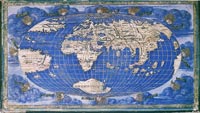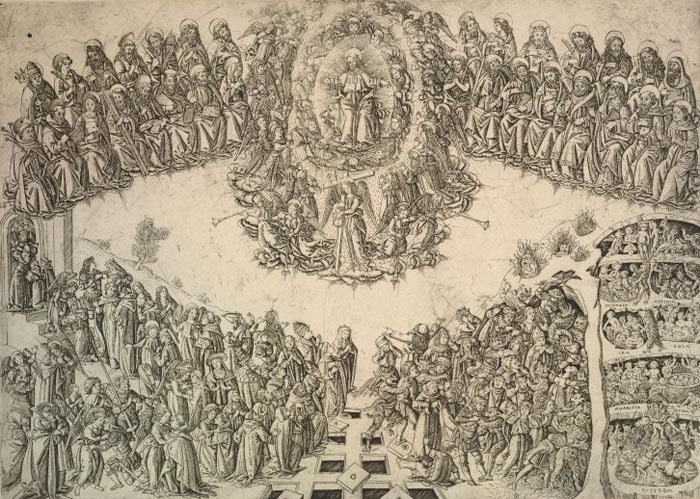| |
|
| |
|
|
|
|
|
|
| |
 |
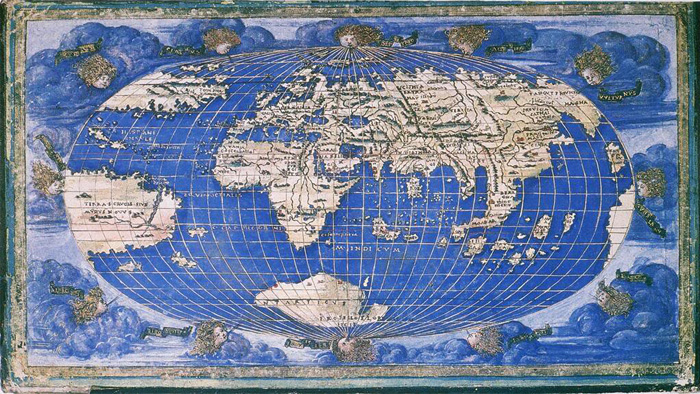 |
| Francesco Rosselli, World Map (c. 1508)
|
|
 |
 |
| |
|
|
|
| |
|
| Francesco di Lorenzo Rosselli (c. 1445-1513) |
|
|
|
| |
|
Francesco Rosselli (b. 1445, Florence, d. before 1513, Florence) was an Italian miniature painter, and an important engraver of maps and old master prints. He is described as a cartographer, although his contribution did not include any primary research and was probably limited to engraving, decorating and selling manuscript maps created by others. He created many important maps, including one of the first printed maps of the world to depict the Americas after Christopher Columbus' voyages. The attribution of prints to him is the subject of debate, as different engraving styles are used. This may be the result of different artists in his workshop, or of his and his shop's ability to use different styles.
Rosselli painted miniatures in several of the most lavish manuscripts produced in 15th-century Florence, including copies of Ptolemy's Geographia and liturgical works for the city's cathedral. He may also have produced panel paintings. The so-called Tavola Strozzi, a view of the Bay of Naples depicting the return of the Aragonese fleet after the Battle of Ischia, has sometimes been attributed to his hand. Rosselli's pictorial engravings were heavily influenced by the paintings of his fellow Florentine Sandro Botticelli. Among his best-known works is a series of fifteen engravings of the Life of the Virgin and Christ.
In the 1480s, Rosselli left his wife and children with his half-brother Cosimo and left Florence for Hungary, because of debt according to his brother, where he made maps for the king of Hungary. Upon returning to Florence, he started a shop to sell his engravings. Rosselli may have been the engraver for some of the "new" maps in editions of Ptolemy's Geographia published in Florence in 1480-82. He was also recorded in Venice in 1505 and 1508.
His shop also sold maps, and was the first known shop to market maps commercially. His two most famous maps date from 1506 and 1508. The 1506 Contarini-Rosselli map, his only signed and dated work, was the first printed map showing the New World. Rosselli's 1508 world map was the first map drawn on an oval projection. This map may have been sold in his shop. His 1508 map also depicted a Southern Continent where Antarctic continent is, vaguely similar in general position to the Southern Continent on the Piri Reis map of 1513, the Lopo Homem map of c. 1519, the Juan Vespucci map of 1524, and other early maps. However, the Antarctic continent was not discovered until the early 19th century. There are many maps from the 15th to the 18th century showing "Terra Australis Incognita" ("unknown land in the south"), the continent that should have been there, according to the Greek philosophers from Pythagoras onwards. They had worked out that the Earth was spherical, and had even calculated its diameter within a good degree of precision (Eratosthenes, in the 3rd century BCE), and thought that, as there were lands in the northern hemisphere, there should be lands in the southern hemisphere too, lest the world be unbalanced.
Francesco's half-brother Cosimo was also an artist. With Botticelli, Perugino, Ghirlandaio and Signorelli, Cosimo was commissioned by Pope Sixtus IV to decorate the walls of the Sistine Chapel in Rome, just a few years before Michelangelo's painting of the chapel ceiling. |
|
|
|
|
| |
|
|
|
|
|
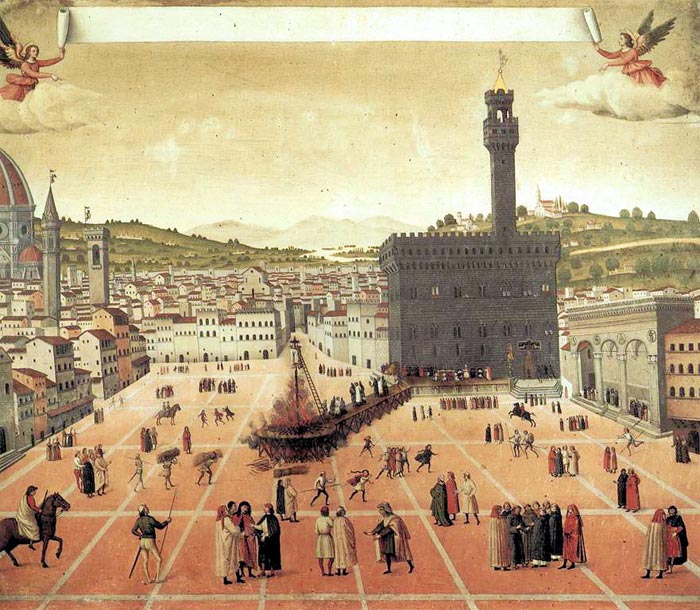 |
Francesco di Lorenzo Rosselli, Execution of Girolamo Savonarola in Piazza della Signoria in Florence in 1498
|
The painting combines the various phases in the execution of Fra Girolamo Savonarola, Fra Domenico Buonvicini and Fra Silvestro Maruffi. The three Dominicans appear before an altar on the "balustrade" in front of the Palazzo dei Signori in Florence, then as they walk onto the raised wooden platform leading to the gallows, and finally hanging from the scaffold with the flames licking their bodies. The square is depicted still with its paving of brick and bands of stone, the Loggia della Signoria and the churches of San Pier Scheraggio and San Romolo. In the background we see the unfinished façade of Santa Croce, on the left the tower of the Bargello, the campanile of the church of Badia and, behind, the dome of the cathedral. In the foreground two Franciscans and two Dominicans are engaged in a discussion; in the upper part two angels hold the ends of a long blank scroll in one hand and indicate the scene with the other.
(...) Room had been certainly been left for the inscription in the painting now in the Museo di San Marco, but the scroll is blank: either the words were erased at a time when it was dangerous to possess a work of large size bearing such a statement about Savonarola, or the picture was never completed.
(...) The portrayal of the last moments of Girolamo Savonarola and his companions is essentially faithful to the accounts given by chroniclers and biographers (on these cf. Sebregondi 2003, pp. 15-21). On the "balustrade" facing the Palazzo dei Signori, a priest is standing near the entrance, while next to him are seated the bishop of Vaison, Benedetto Pagagnotti, and the papal delegates Gioacchino Torriani and François Remolins. Before an altar kneel the three mars, dressed in nothing but a tunic following their degrading, and on the left, near the statue of Marzocco, are arrayed the members of the Tribunale dell'Otto. The condemned man appear again on the wooden walkway that extends into the square, flanked by ministering priests of the Compagnia dei Neri dressed in black and holding the pace a tavoletta, the pax to be used for a final act of devotion.
The position of the kneeling friar, the scaffold with an arm of limited size, the presence of the ladder which the three Dominicans climbed to be hanged and the iron collars and chains from which the bodies were suspended so they did not fall are also in keeping with the accounts. "Once all three of them had been hanged with their faces turned to the Palace with Fra Girolamo in the middle, the platform was finally moved away from the balustrade, and a fire prepared on the round end. They placed gunpowder on it and then set it afIame." (Landucci 1883, p. 176). Figurative requirements made it necessary to show the Dominicans turned toward the observer and not the palace, but in reality the choice of the direction may have been determined by the custom of executing offenders facing the scene of their crime. Hanging Savonarola facing the Palazzo dei Signori may have been meant to demonstrate that his crime had been committed against Florence, represented by the seat of its government. It is hard to tell whether the workmen bringing wood for the fire (who look like they are just doing a routine job) are the "poor craftsmen and others, who believed in the Father and his teaching" forced "to carry firewood and pile up what was needed" (Cronaca di Simone Filipepi 1898, p. 50). The small group in the foreground on the right surrounding two Franciscans and two Dominicans engaged in a discussion may be an allusion to the "ordeal by fire" of the previous April 7.[1]
|
Francesco di Lorenzo Rosselli was an Italian miniature painter, and an important engraver of maps and old master prints. He is described as a cartographer, although his contribution did not include any primary research and was probably limited to engraving, decorating and selling manuscript maps created by others. He created many important maps, including one of the first printed maps of the world to depict the Americas after Christopher Columbus' voyages.
The
World Map shows new details based on exploration of the Amazon, but Rosselli leaves the question of a connection between Asia and the rest of the New World ambiguously unanswered at the map's edges. |
|
|
| |
|
|
The attribution of prints to him is the subject of debate, as different engraving styles are used. This may be the result of different artists in his workshop, or of his and his shop's ability to use different styles.
Rosselli painted miniatures in several of the most lavish manuscripts produced in 15th-century Florence, including copies of Ptolemy's Geographia and liturgical works for the city's cathedral. He may also have produced panel paintings. The so-called Tavola Strozzi, a view of the Bay of Naples depicting the return of the Aragonese fleet after the Battle of Ischia, has sometimes been attributed to his hand. Rosselli's pictorial engravings were heavily influenced by the paintings of his fellow Florentine Sandro Botticelli. Among his best-known works is a series of fifteen engravings of the Life of the Virgin and Christ. |
| |
|
|
|
Francesco di Lorenzo Rosselli (attributed to), The Last Judgment, Engraving, the British Museum, London
|
The Last Judgement: Christ in a mandorla surrounded by saints and angels carrying trumpets and the instruments of the Passion, speads his hands as below the just are welcomed into the gates of Heaven and the damned are herded by devils into the jaws of Hell.
The print belongs to a group of engravings of miscellaneous subjects, catalogued by Hind as executed in the 'Broad Manner', now attributed to Francesco Rosselli.
|
| |
|
|
|
|
| |
|

|
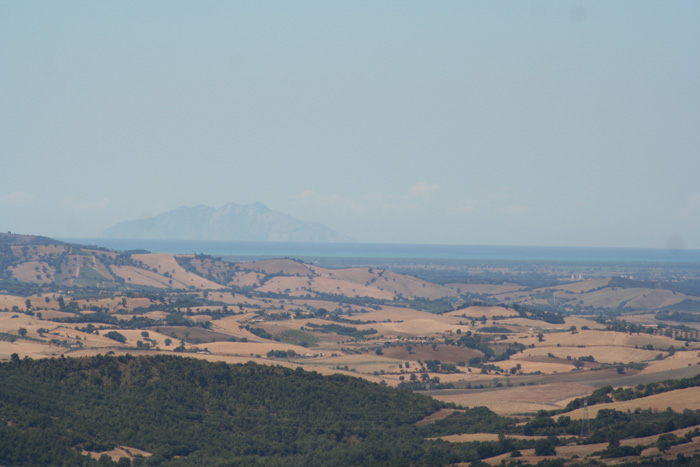 |
Podere Santa Pia situated in panoramic position in the Maremma countryside
|
Podere Santa Pia, an ancient small cloister, faces the gentle hills of Maremma Region, a place always admired for its views and its surrounding landscape. Santa Pia is the ideal location for those who wish to enjoy total privacy.
Santa Pia is perfect for a group or a family who lovse to spent some time together but also like to enjoy their privacy as well.
The hidden secrets of southern Tuscany | Holiday accomodation in Tuscany | Podere Santa Pia
|

Art in Tuscany | Dante Alighieri

[1] Ludovica Sebregondi, in Botticelli : from Lorenzo the Magnificent to Savonarola, edited by Daniel Arasse and Pierluigi De Vecchi, pp. 2218-220. Milan : Skira ; London : Thames & Hudson, 2003.
Silvia Blasio (a cura di), Marche e Toscana, terre di grandi maestri tra Quattro e Seicento, Pacini Editore, 2007. |
|
|
| |
|
|
|
| |
|
|
|
| |
|
|
|
| |
|
|
|
| |
|
|
|
| |
|
|
|
![]()
![]()
![]()
![]()



